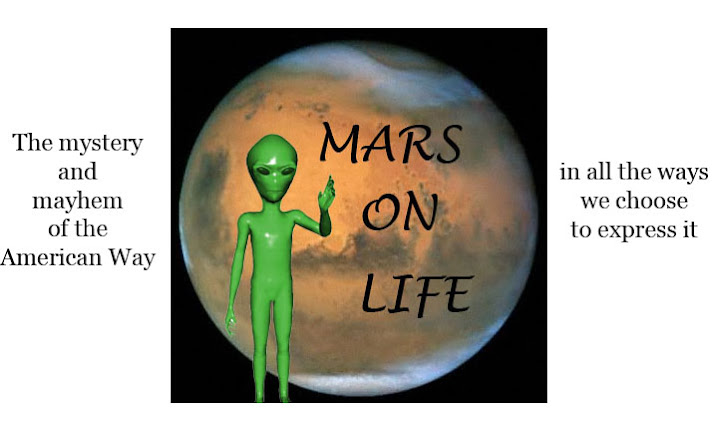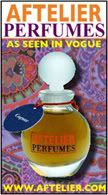After the copyright expired on the Lewis Carroll classic Alice's Adventures in Wonderland, artists spent the next century reillustrating it. Although artists as lost to time as Maria Kirk and as recognized as Salvador Dalí put their individual creative stamp on the story, fo r many the book remains indelibly linked to the line drawings and engravings of Sir John Tenniel. Tenniel's literal drawings of a lyrical, nonsense text nearly cemented Alice as a wide-eyed blonde child with the features of a cherub. Artist Maggie Taylor, a resident of Gainesville, Florida, is the latest to try her hand at illustrating the book, and her method proves the most elastic and revelatory of all. Taylor, who has a degree in photography, works primarily with a flatbed scanner and Photoshop software. Applying a digital process to the text results in an aesthetic depth and a psychological unlocking of the story beyond the scope of traditional illustrative techniques. Alice is a perfect subject for Taylor, who makes the story's characters into a continuum of her own past work. These works become part of a logical sequence, not a detour, into Wonderland, even if at completion Taylor stated that she needed a break from the project.
r many the book remains indelibly linked to the line drawings and engravings of Sir John Tenniel. Tenniel's literal drawings of a lyrical, nonsense text nearly cemented Alice as a wide-eyed blonde child with the features of a cherub. Artist Maggie Taylor, a resident of Gainesville, Florida, is the latest to try her hand at illustrating the book, and her method proves the most elastic and revelatory of all. Taylor, who has a degree in photography, works primarily with a flatbed scanner and Photoshop software. Applying a digital process to the text results in an aesthetic depth and a psychological unlocking of the story beyond the scope of traditional illustrative techniques. Alice is a perfect subject for Taylor, who makes the story's characters into a continuum of her own past work. These works become part of a logical sequence, not a detour, into Wonderland, even if at completion Taylor stated that she needed a break from the project.
Forty-five illustrations comprise the exhibition that is running at the Harn Museum in Gainesville through October 19th. Initially a shorter set of illustrations, Taylor realized that the story was too full blooded to let rest at the original number. She then spent nearly three years completing the work, often involving characters that are not part of the story's main action.
Taylor is a surrealist with a scanner, and her trip into Wonderland proves that fresh artistic interpretation of even a text as amply reillustrated as Alice should not be foreclosed upon. Taylor sees Alice as a series of Alices, all taken from nineteenth-century tintypes and daguerreotypes. The old portraits give the fictional character a reality that transcends a pen or a brush. The subjects of the portraits wear the somber, almost dour facial expressions common to the photography of the era, and yet upon study each reveals a unique quality apart from their features: One Alice bears a trace of cynicism while another seems passively hostile; a third looks sated and self-satisfied.
Although the use of multiple Alices gives a surface reading of human unity, it also gives rise to the question of who Alice really is, apart from Alice Liddell. In my mind she is the many faces of childhood, full of quick and contradictory temperaments and unhampered desires to be that which she is not. The combination of illusion and tangibility also links the Renaissance "window of reality" in painting to the metaphysicality of the Surrealists. In Taylor's hands, Alice's identity is on equal footing with Alice's imaginations.
The artist's skill with Photoshop is evident. Working at times with over 50 layers, each illustration is seamlessly constructed. A photograph of a ceramic rabbit (this "found art" is on display at the exhibition) becomes the head of The Herald, the illustration that decorates the cover art of the companion Modernbooks volume. The technical mastery of her medium gives the works a plausibility outside of mere whimsy. Hasn't a mustachioed strongman's head always been attached to the body of a caterpillar?
Taylor goes where Tenniel did not. In many instances, topography and setting are as important as the characters she places in their foregrounds. The scale of certain illustrations highlights the importance of the gray English mists, although the text mentions a "hot day" before it allows action to supersede setting. Although Taylor's work is properly described as montage, it has its roots in the tradition of the surrealist collage, especially as practiced by Magritte, Ernst, and Nash. The equal emphasis given to place makes this relationship all the more apparent. In one picture, a house with rabbit ears (standing in for a chimney) has nearly as much focal weight as the Mad Tea Party taking place on its lawn. The transparent Cheshire Cat grinning above a stoic Alice is a built-in element perfectly suited to the surrealist's landscape.
A major drawback to surrealist collage has always been the ego of the artist, whose refusal to let go of psychic clutter can c ause an incoherent, unintelligible work. Rather than paralyzing her work with extraneous gibberish (jabberwock?), Taylor evinces control over what could have been a hodge-podge of disparate elements. Each piece is well articulated and almost works as a stand-alone exhibit, at once tied to and liberated from the text. Respect for that text is obvious throughout; although the raw components may be detached the psychological through-line is not.
ause an incoherent, unintelligible work. Rather than paralyzing her work with extraneous gibberish (jabberwock?), Taylor evinces control over what could have been a hodge-podge of disparate elements. Each piece is well articulated and almost works as a stand-alone exhibit, at once tied to and liberated from the text. Respect for that text is obvious throughout; although the raw components may be detached the psychological through-line is not.
Digital art like Taylor's allows an artist to uproot materials from time, place, context, scale, and emotion. The small exhibition of materials lets the viewer see the causal relationship between item and illustration. Alone, they seem like tchotchkes incapable of transformation, but integrated into a picture they become fluid and required components. Although the exhibition thrills as both technical demonstration and artistic tour de force, Taylor does not allow technical wizardry to trump creative integrity. In either regard, her work reinforces the importance of expanding the definitions of photography, painting and illustration. Almost Alice is a significant contribution to the literary canon and an provocative excursion into the boundlessness of fancy.
Almost Alice: New Illustrations of Wonderland, at the Samuel P. Harn Museum on the University of Florida campus, now through October 19th.
Alice's Adventures in Wonderland, original text by Lewis Carroll with images by Maggie Taylor and an essay by Norman N. Holland, Modernbook Editions.
Images: Maggie Taylor.com
Thursday, July 17, 2008
Off With Her Head
Subscribe to:
Post Comments (Atom)









9 comments:
This post is serendipitous. Guess what I've been busy doing instead of blogging? Self-publishing a version of Alice in Wonderland for Thomas' birthday, illustrated by his friends.
PS. Glad to have you back!
Sharon, that sounds marvelous! I'd love to see it sometime!
You and Thomas amaze me with your creativity.
I wish I'd seen this exhibition; I've always loved the imagery surrounding "Alice." I love the modern illustration technique as a counterpoint to the classic story.
I'm glad you're blogging again. I hope to see more posts from you very soon!
Missed you!
/DCB.
My god - I almost gasped. Lovely, lovely, lovely.
Please see my own, limited collection of Alices, here:
http://www.flickr.com/photos/onegoodtum/sets/72157602139843117/
I'd LOVE to see this exhibition...it's interesting to see that her work using digital methods does sit so well with the book and against Tenniel's formidable illustrations...
Where have you been?
I can't wait to see the images I love "alice in wonderland" From what I saw it's beautiful and exactly what comes to mind when I think back at the story!!!!!
SB, I believe this tour is headed your way. Will try to find the dates for you.
Post a Comment